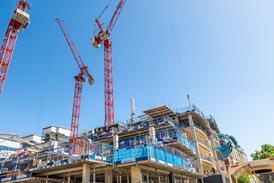- News

All the latest updates on building safety reformRegulations latest
- Focus
- Home
- News
- Focus
- Comment
- Events
- CPD
- Building the Future
- Jobs
- Data
- Subscribe
- Building Boardroom
Plugging in: We need to get smarter about tech-enabled offices
By Richard Kauntze 2024-05-22T06:00:00

Technology is no longer a bolt-on to be installed in an office after practical completion but an essential component of the ‘commute-worthy’ workplace, writes the BCO’s chief executive Richard Kauntze
The next time you visit an office, could you be met in the lobby by a robot receptionist? Will the coffee in your meeting be served by a cyber assistant? It might sound far-fetched but, with global companies such as EY and Google using new tools to track employee attendance, technology is already transforming the office.
As we enter what looks to be another technological revolution, this time powered by artificial intelligence, technology has the potential to renew the purpose of the office by providing workers with the space and resources required to work to the best of their ability. But we need to understand the opportunity in full to make the best use of it, and to avoid bringing in tech where it is neither necessary nor helpful.
Technology is one of the forces identified by the British Council for Offices (BCO) as having an important impact on real estate and the workplace, and forms one of the pillars of the BCO’s new research agenda, alongside economic change, new business structures and the rise of environment, sustainability and governance (ESG) principles.
Already registered? Login here
To continue enjoying Building.co.uk, sign up for free guest access
Existing subscriber? LOGIN
Stay at the forefront of thought leadership with news and analysis from award-winning journalists. Enjoy company features, CEO interviews, architectural reviews, technical project know-how and the latest innovations.
- Limited access to building.co.uk
- Breaking industry news as it happens
- Breaking, daily and weekly e-newsletters
Get your free guest access SIGN UP TODAY

Subscribe now for unlimited access
Subscribe to Building today and you will benefit from:
- Unlimited access to all stories including expert analysis and comment from industry leaders
- Our league tables, cost models and economics data
- Our online archive of over 10,000 articles
- Building magazine digital editions
- Building magazine print editions
- Printed/digital supplements
Subscribe now for unlimited access.
View our subscription options and join our community


















